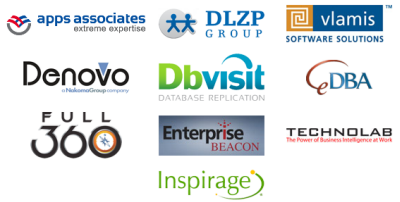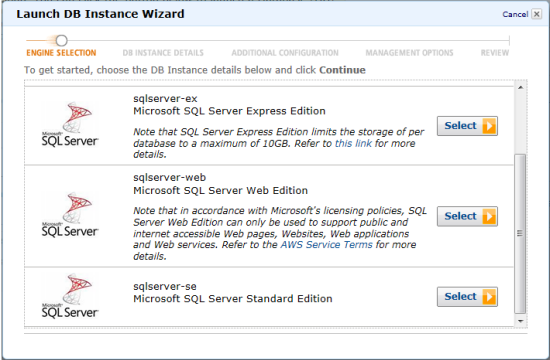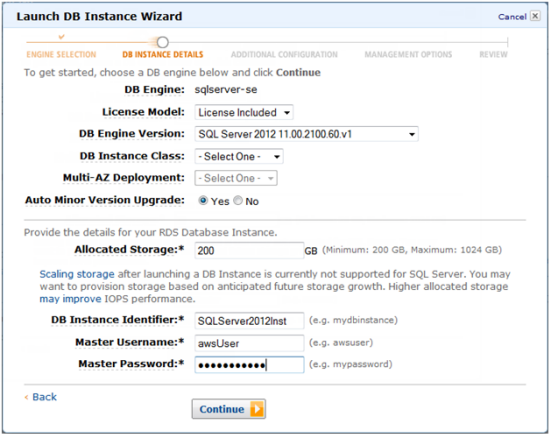A very nice way of representing AWS and Cloud Concepts...
If above is not visible, access it at the SOURCE.
 With this in mind, AWS has teamed up with leading Oracle ecosystem partners on a new initiative called the Oracle Test Drive program.
With this in mind, AWS has teamed up with leading Oracle ecosystem partners on a new initiative called the Oracle Test Drive program. ‡ Amazon RDS free tier is currently not available in VPC.| Monday, September 24 |
|
| Tuesday, September 25 |
|
| Wednesday, September 26 |
|
| Thursday, September 27 |
|
| Friday, September 28 |
|


When you need an AWS command line toolset not provided by Ubuntu packages, you can download the tools directly from Amazon and install them locally.Unfortunately, Amazon does not have one single place where you can download all the command line tools for the various services, nor are all of the tools installed in the same way, nor do they all use the same format for accessing the AWS credentials.
sudo apt-get update sudo apt-get install -y openjdk-6-jre ruby1.8-full libxml2-utils unzip cpanminus build-essential sudo mkdir -p /usr/local/aws wget --quiet http://s3.amazonaws.com/ec2-downloads/ec2-api-tools.zip
unzip -qq ec2-api-tools.zip
sudo rsync -a --no-o --no-g ec2-api-tools-*/ /usr/local/aws/ec2/
wget --quiet http://s3.amazonaws.com/ec2-downloads/ec2-ami-tools.zip
unzip -qq ec2-ami-tools.zip
sudo rsync -a --no-o --no-g ec2-ami-tools-*/ /usr/local/aws/ec2/
"We want to provide the best possible reading and content delivery experience for a rapidly growing base of users and publishers. This requires us not only to use a high performance database today but also to continue to improve our performance in the future. Throughput consistency is critical for our workloads. Based on results from our early testing, we are very excited about Amazon RDS Provisioned IOPS and the impact it will have on our ability to scale. We’re looking forward to scaling our database applications to tens of thousands of IOPS and achieving consistent throughput to improve the experience for our users."
"Amazon RDS Provisioned IOPS provided a turbo-boost to our enterprise class database-backed applications. In the past, we have invested hundreds of days in time consuming and costly code based performance tuning, but with Amazon RDS Provisioned IOPS we were able to exceed those performance gains in a single day. We have demanding clients in the Energy, Telecommunication, Finance and Retail industries, and we fully expect to move all our Oracle backed products onto AWS using Amazon RDS for Oracle over the next 12 months. The increased performance of Amazon's RDS for Oracle with Provision IOPS is an absolute game changer, because it delivers more (performance) for less (cost)."
|
Monday, September 17
|
§
AWS
added four new checks to the AWS Trusted
Advisor including EC2 Reserved Instance Optimization, VPN
Tunnel Redundancy, RDS Backup, and RDS Multi-AZ.
|
|
Tuesday, September 18
|
§
AWS
introduced Auto Scaling termination policies to give you additonal
control over the scale-down process.
|
|
Friday, September 21
|
§
Developer
Andy Chilton released version 0.11.0
of Awssum, a collection of node.js modules for AWS.
|
| Tuesday, September 11 |
|
| Wednesday, September 12 |
|
| Thursday, September 13 |
|
Access and manage Amazon’s growing suite of infrastructure web services through a simple and intuitive, web-based user interface. The AWS Management Console provides convenient management of your compute, storage, and other cloud resources.
Consider this as a "POWER USER LOGIN" (this is a term coined by me to set perspective and not by AWS)
A user can sign in using the typical AWS Console login URL. The user must use email-address using which the account is created and password provided.
This way of sign in allows the user complete control over the AWS services, resources and account management.In this guide we will be concentrating more on Account-level login to the AWS Management Console.
Consider this as a "ACCESS CONTROLLED USERs"(this is a term coined by me to set perspective and not by AWS)
In case there is need of more than 1 user to login to the AWS account, you can use the IAM Service. Each user may have same or different access controls over the various AWS services and resources. The users can sign into the console using a different alias, specific to your account and using specific user login name & password. These privilieges are not only applicable to the AWS Management Console. The same can be applied to the use of SDKs and APIs. This can be achieved by creating user specific Access Keys and Secret Keys.
IAM also enables identity federation between your corporate directory and AWS services.
I'm NOT covering IAM user login in this tutorial, but I will surely write a guide on the topic and provide updated links.